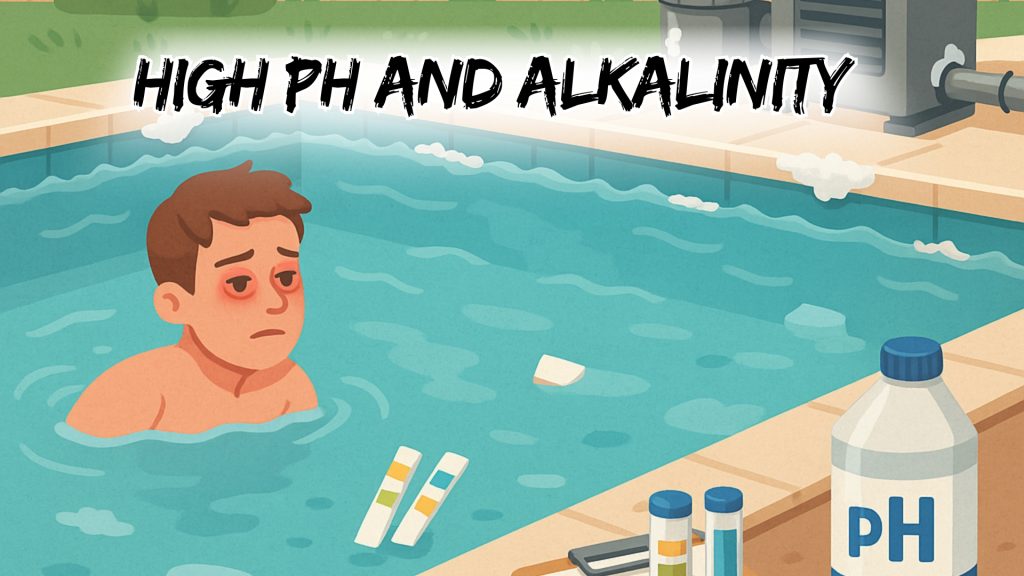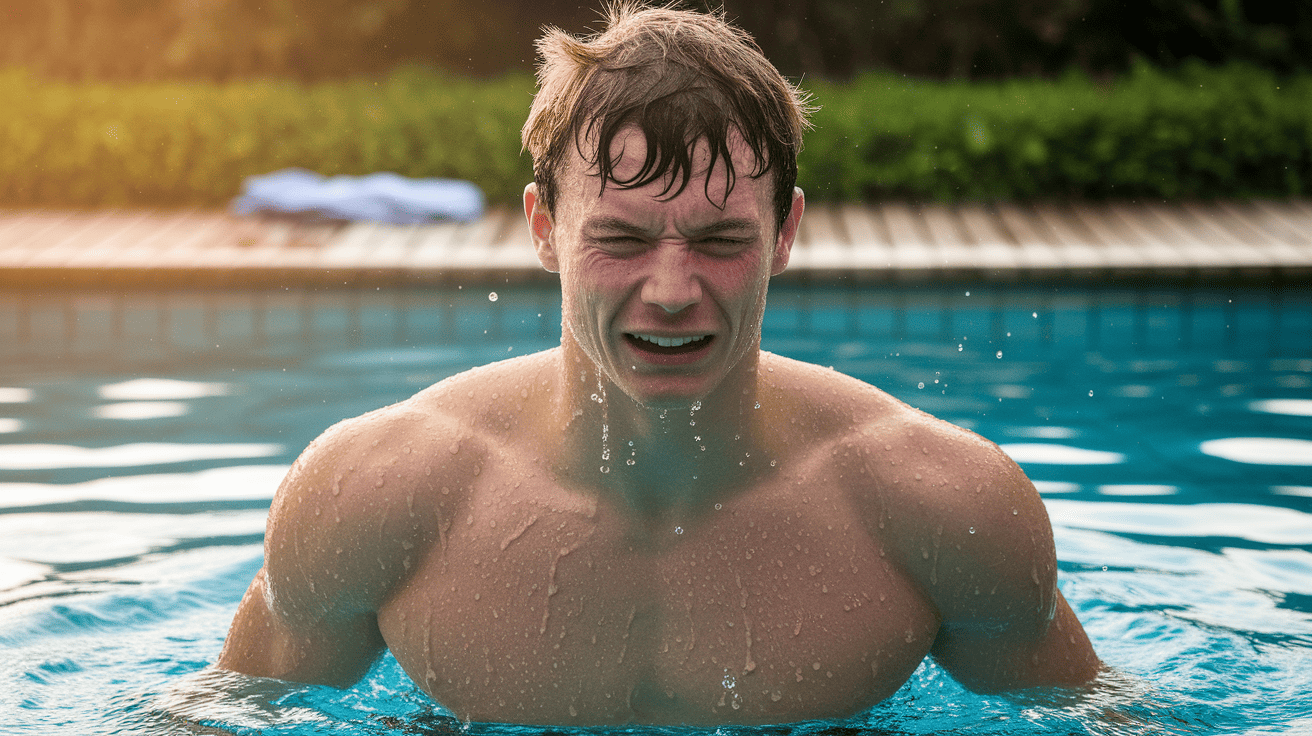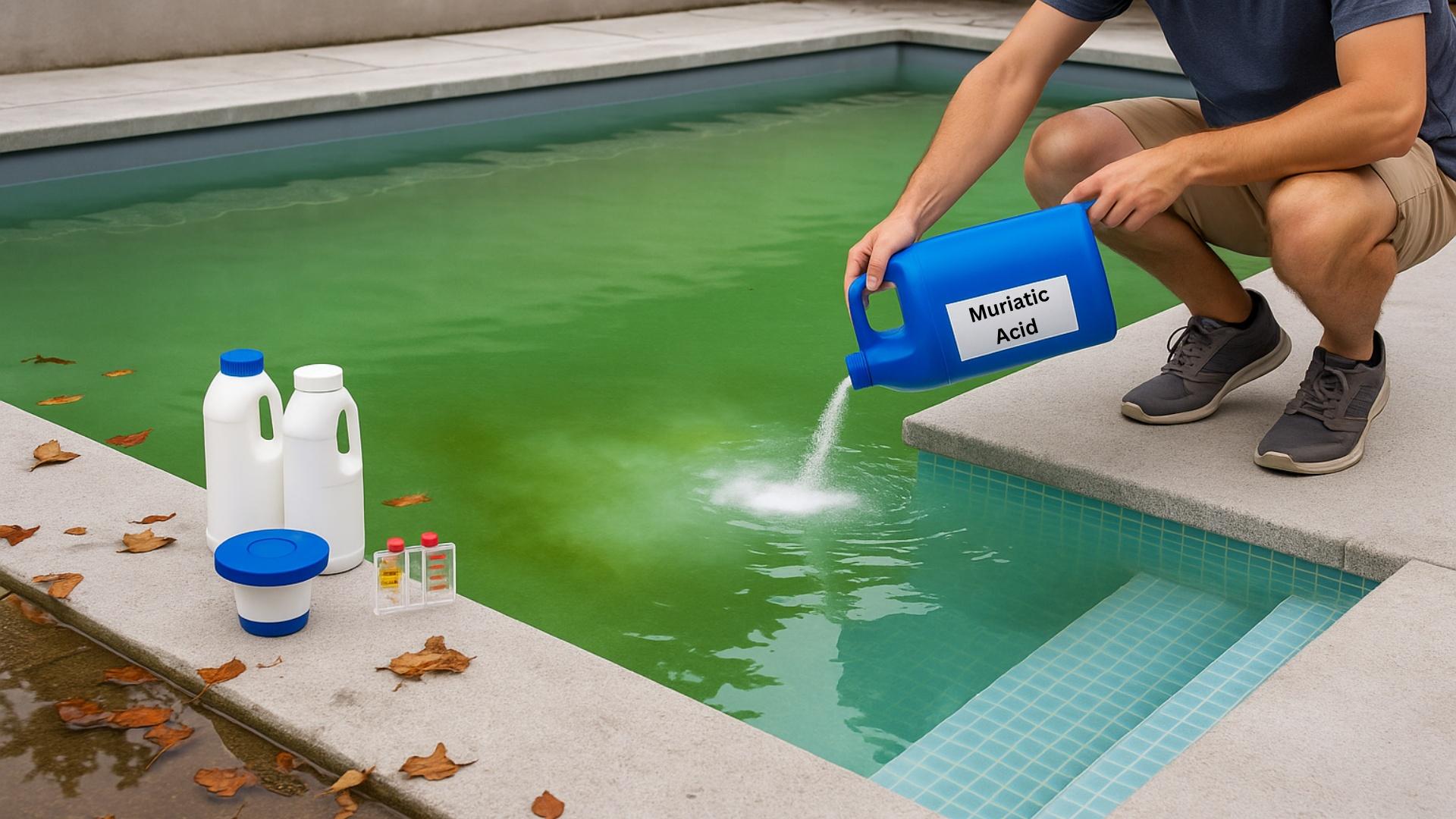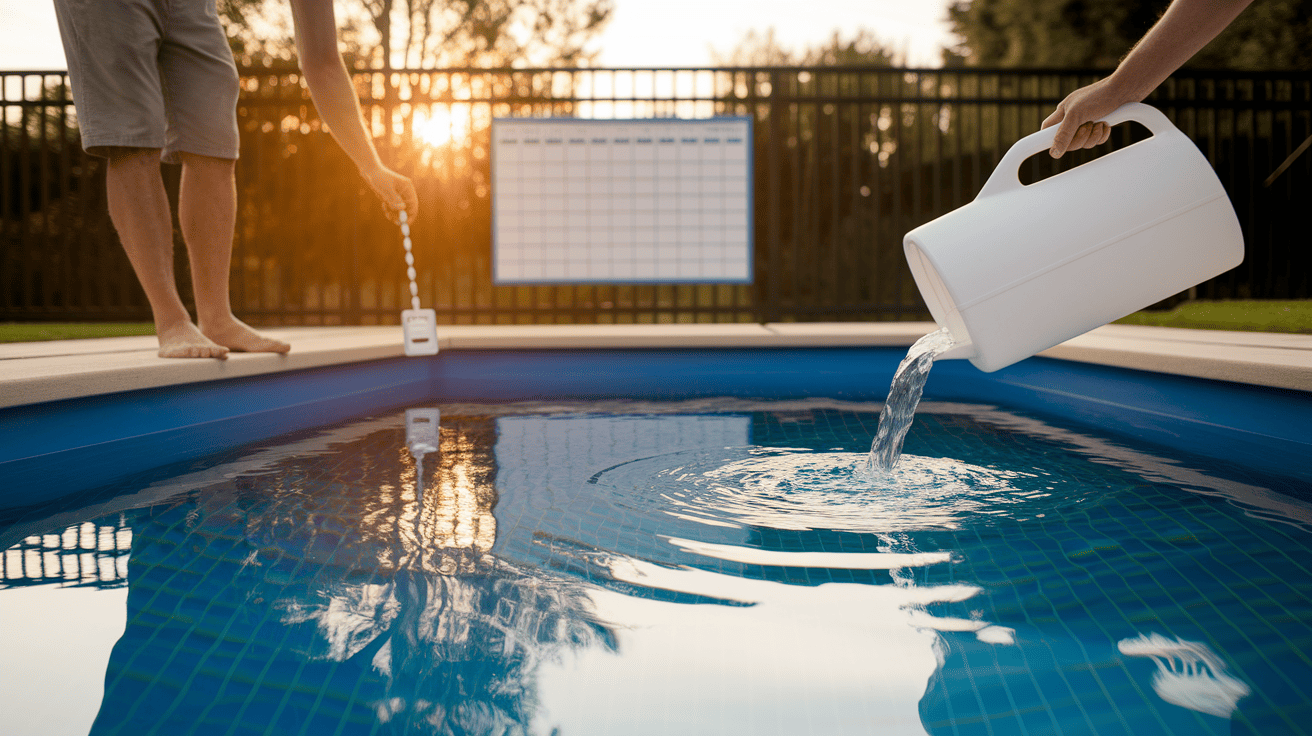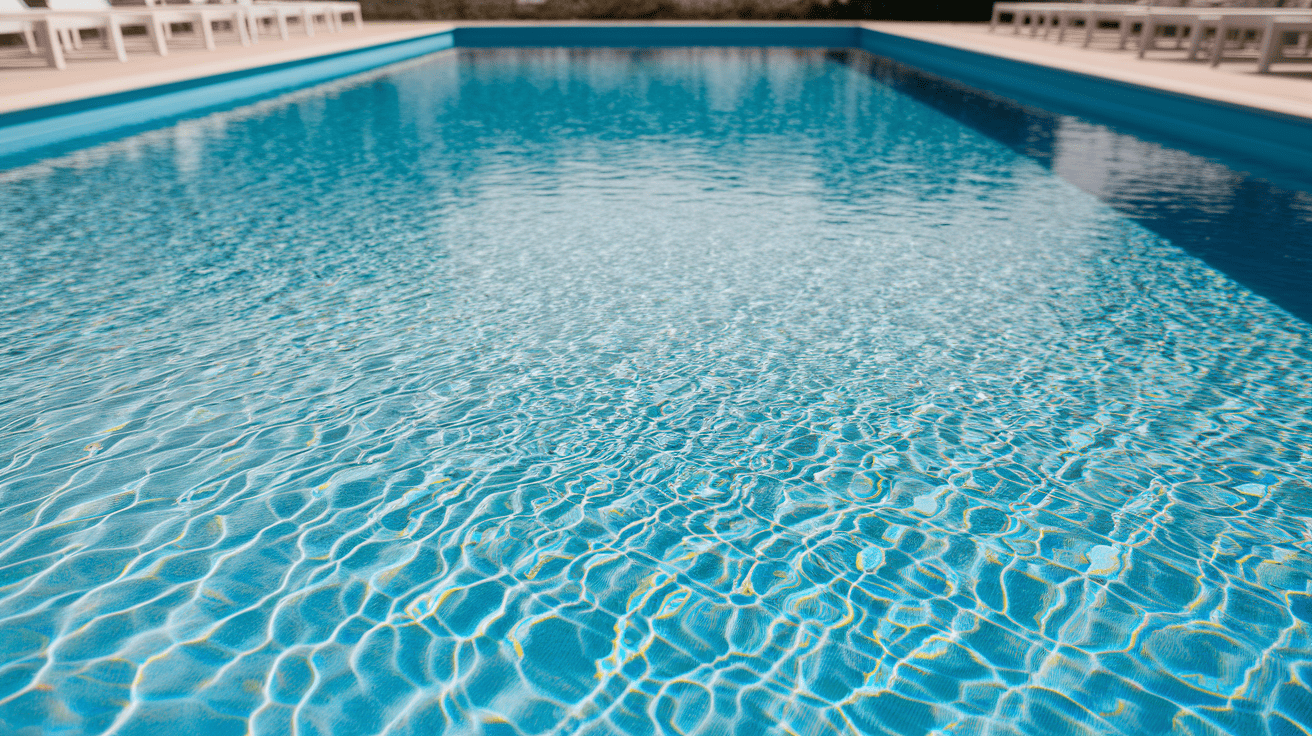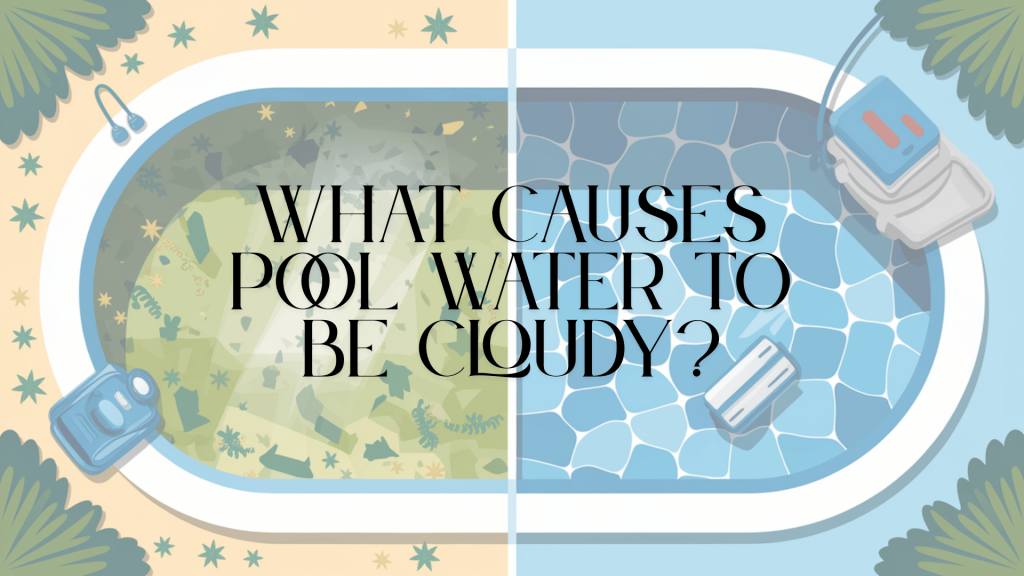Pool owners know the frustration of stepping outside to find cloudy water or feeling itchy skin after a swim. Often, the culprit is hiding in your water chemistry, specifically high pH and alkalinity levels.
These invisible troublemakers can damage your equipment, irritate swimmers, and drain your wallet through increased chemical and repair costs.
While many pool problems appear complicated, understanding and fixing high pH and alkalinity is actually straightforward once you know the signs and solutions.
Even better, addressing these issues promptly can save you hundreds in equipment repairs and chemical treatments. Ready to clear up your pool problems?
Uncover the world of pH and alkalinity to transform your cloudy, scale-covered pool into the crystal-clear oasis you deserve.
Understanding pH and Alkalinity in Swimming Pools
Pool water chemistry can seem complicated, but two key factors are pH and alkalinity. pH measures the acidity or basicity of your water on a scale from 0 to 14, with 7 being neutral.
Most pools should maintain a pH level between 7.2 and 7.8 to protect swimmers and equipment. Alkalinity works in conjunction with pH as a buffer, preventing rapid pH changes when chemicals are added.
Think of alkalinity as a stabilizer that maintains a steady pH. The ideal alkalinity range is typically 80-120 ppm (parts per million).
When both pH and alkalinity are balanced, swimmers enjoy greater comfort with less skin and eye irritation.
Your pool equipment also benefits from proper chemistry, as balanced water prevents corrosion of metal components and scaling on surfaces.
Regular testing and adjustments help maintain these levels, ensuring your pool remains safe, comfortable, and protected from damage.
How High pH and Alkalinity Affect Your Pool
When pH and alkalinity climb too high in your pool, the consequences extend beyond just water clarity. Your expensive pool equipment takes a direct hit as scale builds up inside pumps, filters, and heaters, reducing efficiency and shortening their lifespan.
The effectiveness of chlorine dramatically decreases at high pH levels, meaning you’ll need to add more chemicals to maintain the same sanitizing power.
Scale doesn’t just affect equipment—it creates rough, unsightly deposits on pool surfaces that can be difficult and costly to remove. Swimmers often notice problems too, experiencing dry, itchy skin and irritated, red eyes after swimming in high-pH water.
These chemical imbalances can trigger a domino effect, disrupting other water parameters, such as calcium hardness.
Perhaps most noticeable to pool owners is the financial impact—increased chemical usage, higher energy bills from inefficient equipment, and premature replacement of damaged components can significantly drive up your pool maintenance costs.
Reasons for High pH and Alkalinity
Several factors can push your pool’s pH and alkalinity into the danger zone. Shock treatments, while essential for killing bacteria, often raise pH levels after they finish working.
If your home uses hard water or well water, the high mineral content naturally increases alkalinity when you fill or top off your pool.
Many pool products, like algaecides and cleaning solutions, contain alkaline ingredients that gradually shift your water chemistry.
Mother Nature also plays a role—rainwater, leaves, and other debris can alter pH levels when they enter your pool.
Newly installed concrete or plaster pools are particularly susceptible to high pH levels, as these materials naturally leach alkaline compounds into the water for several months.
Finally, simple maintenance mistakes, such as adding too many chemicals at once or not testing frequently enough, can lead to unwanted spikes in both pH and alkalinity levels.
Testing Your Pool Water Correctly
Accurate water testing is the foundation of proper pool maintenance. Without reliable test results, you’re essentially guessing at which chemicals to add and in what amounts. The table below outlines the different testing methods available:
| TESTING METHOD | ACCURACY | EASE OF USE | BEST FOR | COMMON MISTAKES |
|---|---|---|---|---|
| Test Strips | Moderate | Very Easy | Quick checks | Reading too early/late, touching the test area |
| Liquid Test Kits | High | Moderate | Precise measurements | Using dirty containers, incorrect drop counts |
| Digital Testers | Very High | Easy | Regular monitoring | Not calibrating; low battery affecting results |
| Professional Testing | Highest | No effort | Troubleshooting | Waiting too long to test the sample |
Regardless of which testing method you choose, consistency is key. Establish a regular testing schedule and keep a log of your results to track changes over time.
This history can help you identify patterns and address minor issues before they escalate into major problems.
Signs Your Pool Has High pH and Alkalinity
When your pool’s pH and alkalinity climb too high, several telltale signs will appear. These indicators serve as early warnings that your water chemistry needs attention:
- Cloudy or hazy water that lacks sparkle and clarity.
- White, crusty scale forming on pool surfaces, especially around waterlines.
- Chlorine that seems to disappear quickly without effectively killing bacteria.
- Swimmers are complaining about red, irritated eyes and itchy, dry skin.
- The pool equipment is working harder but cleaning less efficiently.
- Heaters and filters require more frequent repairs or replacement.
- A noticeable increase in your monthly pool maintenance costs.
Addressing these issues promptly can prevent more serious problems from developing. The good news is that with proper testing and treatment, you can quickly restore balance to your pool water and enjoy swimming again.
How to Fix High pH and Alkalinity in Your Pool
Dealing with high pH and alkalinity doesn’t have to be complicated. With the right approach and some basic knowledge, you can quickly and safely restore your pool water to balance. Follow these step-by-step instructions to restore your pool’s chemistry and prevent future problems.
Step 1: Test the Water Regularly
Regular testing is your first line of defense against chemical imbalances. Use reliable test strips or liquid test kits to check your levels at least twice a week, more frequently during periods of heavy use.
Digital testers provide the most accurate readings but incur higher upfront costs. Always test at the same time of day, preferably in the morning before swimmers or sun affect the chemistry.
Step 2: Lowering pH Levels
When the pH level rises too high, muriatic acid or sodium bisulfate (dry acid) can help bring it back down. Always add acid with the pump running and distribute it around the pool rather than in one spot.
Start with small amounts and retest after 4-6 hours before adding more. Never add acid during the heat of the day or when swimmers are present.
Step 3: Lowering Alkalinity Levels
High alkalinity requires a targeted approach. Add muriatic acid to a single spot with the pump off to maximize its effect on alkalinity before circulating.
For stubborn cases, partially drain your pool and refill with fresh water that has lower mineral content. This dilution method works gradually without harsh chemical adjustments.
Step 4: Preventing High pH and Alkalinity in the Future
Prevention is simpler than correction. Establish a weekly maintenance schedule that includes testing and minor adjustments. Store chemicals properly in cool, dry places and follow dosage instructions precisely.
Consider using automatic chemical feeders for consistent treatment. Regularly clean your pool to remove debris that can affect water chemistry before problems develop.
Tips for Maintaining Balanced Pool Water
Keeping your pool chemistry in balance doesn’t have to be complicated. With a few simple habits and preventative measures, you can avoid the headache of correcting major imbalances and enjoy crystal clear water all season long:
- Test your water at least twice a week, more frequently during periods of heavy use.
- Add chemicals in the evening to prevent UV degradation from sunlight.
- Run your pool filter at least 8-10 hours daily to maintain proper circulation.
- Clean skimmer baskets, pump baskets, and filters according to manufacturer recommendations.
- Keep a log of chemical readings and additions to track patterns over time.
- Add chemicals slowly and in small amounts, waiting at least 6 hours between adjustments.
- Consider using a pool cover when the pool is not in use to reduce debris and chemical loss.
Remember that small, regular adjustments are far better than major corrections. Being proactive about your pool maintenance will save you time, money, and frustration while ensuring your pool remains safe and inviting for everyone who uses it.
The Bottom Line
Maintaining proper pH and alkalinity isn’t just about having clear water – it’s about protecting your investment and ensuring safe, comfortable swimming.
High levels might seem intimidating at first, but with regular testing and the right approach, you can easily bring your pool back into balance. Remember that small, consistent adjustments are more effective than dramatic chemical additions.
Keep your test kit handy, develop a regular maintenance schedule, and address issues as they arise rather than waiting for visible problems. Your reward will be reduced chemical costs, longer-lasting equipment, and a pool that’s always ready for that perfect swim.
With these skills in your pool care arsenal, you’re well-equipped to enjoy hassle-free swimming all season long. Balance your water chemistry today, and dive into worry-free splashes tomorrow!

